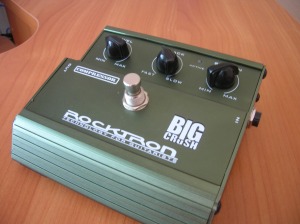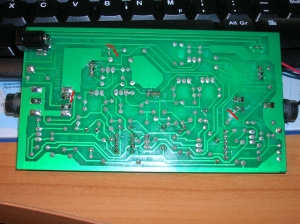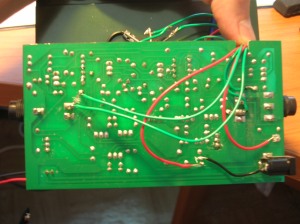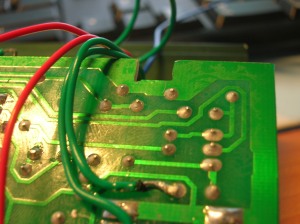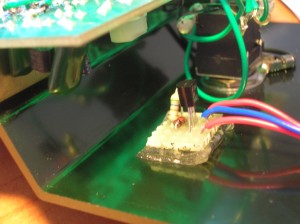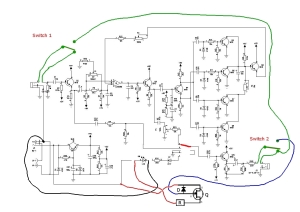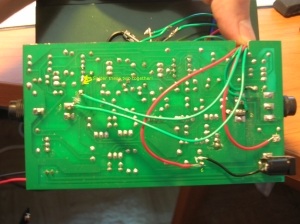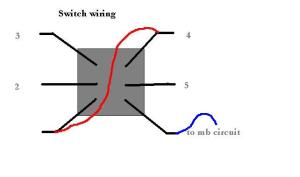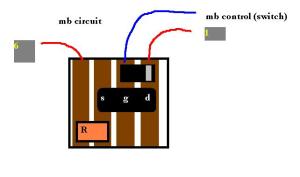A while ago I bought a MXR DynaComp clone kit, but I never got started on it. Lately I’ve been trying to tidy up my electronics-stuff and finish all my half-finished projects. So I went through the parts and realized there were a few parts that were not in the kit. I ordered the missing parts together with some other stuff that I needed and sat down to finish it.
I like to try something new for every project, some new technology or way of doing something, that I haven’t tried before. This time I wanted to etch my own circuit board. I downloaded the layout from General Guitar Gadgets and printed it on Press-n-Peel film.
This turned out be a very convenient way of transfering the layout once I got the printer settings right. Be sure You print the right size! There was one line that wasn’t transferred properly, but I was able to correct that with a permanent marker. Then I etched the board in ferric chloride untill all the extra copper had been dissolved.
The cotton string is a good idea unless You like getting acid on your fingers.
Then I did the ususal drilling (1 mm drill bit) and cleaned the board from the transfer film residue using lighter fluid.
Then I drilled the enclosure (1590BB, pre-painted) and installed all the components that don’t go on the circuit board.
Once again I used the millennium bypass, as I happened to have couple of DPDT switches lying around.
I felt like being super-organized, so I taped all the components to a sheet of paper and wrote down the component values next to them. Maybe a bit excessive work, but I actually got everything right at once this time.
It was the usual routine when soldering, jumpers first, then resistors, polyester caps, electrolytic caps, semicounductors.
With everything in place I connected the board to all the external parts.
Spot the mistake in the picture above.
I found it the hard way when testing. No sound whatsoever, and my spirits sank. Until I realized I hadn’t put the OTA in it’s socket… Easy fix, and everything worked fine.
That’s it then folks. I really like the sound, much more prominent compression than my Rocktron Big Crush, more vintage if You like. I could use a little more treble, anyone know which capacitor to change for this? But it’s no big deal, I like the sound, perfect for funk and clean legato lead stuff.
Stay tuned!















